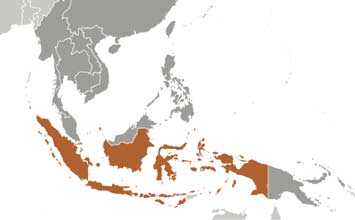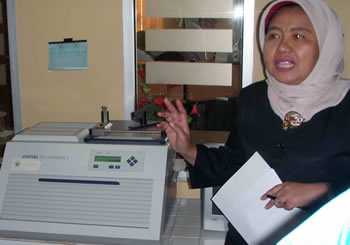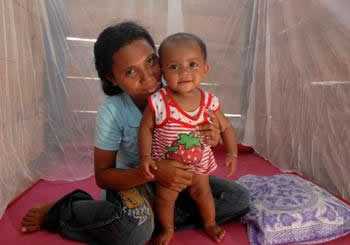
CDC has collaborated with Indonesia for more than fifty years. Assistance from CDC has helped the Indonesian Ministry of Health address a wide range of high-priority public health needs, including infectious diseases, noncommunicable diseases, injuries, and surveillance.
Download Overview Fact Sheet
 Staff
Staff
CDC office (physical presence)
3 U.S. Assignees
4 Locally Employed
 Indonesia at a Glance
Indonesia at a Glance
Population: 255,741,973
Per capita income: $10,250
Life expectancy at birth women/men: 73/69 yrs
Infant mortality rate: 31/1000 live births
Source: Population Reference Bureau 2014-Indonesia
 Top 10 Causes of Death
Top 10 Causes of Death
Source: WHO Country Health Profiles 2012: Indonesia
- Stroke 21%
- Ischemic Heart Disease 9%
- Diabetes 7%
- Lower Respiratory Infections 5%
- TB 4%
- Cirrhosis 3%
- Chronic Obstructive Pulmonary Disease 3%
- Road Injury 3%
- Hypertensive Heart Disease 3%
- Kidney Diseases 3%
What CDC Is Doing
- Page last reviewed: May 12, 2016
- Page last updated: May 12, 2016
- Content source:
Global Health
Notice: Linking to a non-federal site does not constitute an endorsement by HHS, CDC or any of its employees of the sponsors or the information and products presented on the site.



 ShareCompartir
ShareCompartir

 The Influenza Division activities assist in building the evidence-base for influenza control and prevention, including for seasonal, avian, and pandemic influenza. Through two cooperative agreements, CDC funded the Indonesia MoH to build capacity in influenza pandemic preparedness, including communications, infection control, rapid response, country planning, including intersectoral functional exercises, virological and epidemiological influenza surveillance. Each of these was important in responding to the H1N1pdm09 pandemic. CDC funding continues to support routine influenza surveillance, the National Influenza Center laboratory and the integration of surveillance with disease program policy development. Surveillance systems established are increasingly self-sustained and are being expanded to examine other public health priorities such as pneumonia and dengue. In 2011, the Indonesia MoH, in collaboration with CDC and USAID, began piloting an enhanced surveillance project to better understand the burden of seasonal and avian influenza in the East Jakarta District. In addition to establishing disease burden estimates, this project is identifying mechanisms for enhancing routine surveillance system functions.
The Influenza Division activities assist in building the evidence-base for influenza control and prevention, including for seasonal, avian, and pandemic influenza. Through two cooperative agreements, CDC funded the Indonesia MoH to build capacity in influenza pandemic preparedness, including communications, infection control, rapid response, country planning, including intersectoral functional exercises, virological and epidemiological influenza surveillance. Each of these was important in responding to the H1N1pdm09 pandemic. CDC funding continues to support routine influenza surveillance, the National Influenza Center laboratory and the integration of surveillance with disease program policy development. Surveillance systems established are increasingly self-sustained and are being expanded to examine other public health priorities such as pneumonia and dengue. In 2011, the Indonesia MoH, in collaboration with CDC and USAID, began piloting an enhanced surveillance project to better understand the burden of seasonal and avian influenza in the East Jakarta District. In addition to establishing disease burden estimates, this project is identifying mechanisms for enhancing routine surveillance system functions.
